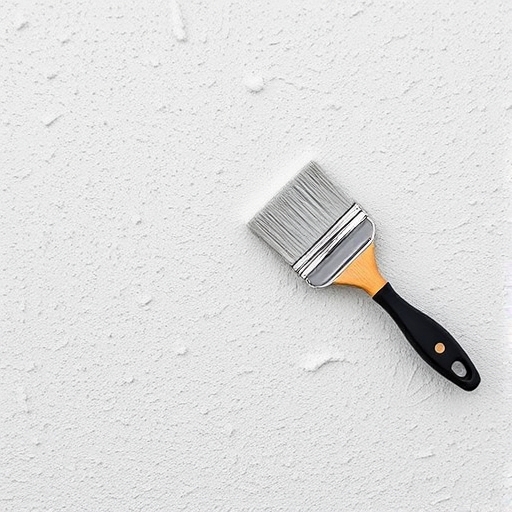How to Paint Stucco: A Comprehensive Guide
Painting stucco can breathe new life into your home’s exterior, enhance curb appeal, and protect the surface from the elements. Whether you’re refreshing an old coat of paint or changing the color entirely, this guide will walk you through the entire process step by step.
What is Stucco?
Stucco is a popular building material made from a mixture of sand, water, cement, and lime. It’s known for its durability and versatility, making it a favored choice for both residential and commercial buildings. Stucco can be finished in various textures and colors, but it may require periodic maintenance, including painting, to keep it looking its best.
Why Paint Stucco?
Painting stucco serves several important purposes:
- Protection: A fresh coat of paint protects the stucco from moisture, UV rays, and other environmental factors.
- Aesthetic Appeal: Updating the color can modernize your home’s appearance and increase its value.
- Repair: Painting can conceal minor imperfections and damage in the stucco surface.
- Pressure washer
- Paint scraper
- Caulk gun
- Paint roller and extension pole
- Paintbrushes (various sizes)
- Ladder or scaffolding
- Drop cloths or tarps
- Masking tape
- Stucco primer (specifically formulated for stucco surfaces)
- Stucco paint (100% acrylic latex is recommended)
- Caulk (paintable exterior caulk)
- Water (for cleaning and mixing)
- Type: Use a high-quality 100% acrylic latex paint. This type of paint is breathable, allowing moisture to escape while preventing water from penetrating.
- Finish: Flat or satin finishes are often preferred for stucco, as they help hide imperfections and provide a natural look.
- Remove the masking tape while the paint is still slightly tacky to avoid peeling.
- Clean brushes and rollers with warm soapy water.
- Dispose of any waste materials according to local regulations.
- Check the Weather: Ideal conditions for painting stucco are dry weather with temperatures between 50°F and 85°F. Avoid painting on windy days, as dust and debris can interfere with the finish.
- Test Paint Colors: Always test a small area with your chosen paint color to ensure you like the final look.
- Consider Texture: The texture of stucco can affect how paint is applied and how it looks. Be prepared for more paint consumption in textured areas.
Tools and Materials Needed
Before you start painting, gather the following tools and materials:
Tools
Materials
Step-by-Step Guide to Painting Stucco
Step 1: Prepare the Surface
Proper preparation is crucial for a successful paint job. Follow these steps:
1. Clean the Stucco: Use a pressure washer to remove dirt, mold, and mildew. If a pressure washer isn’t available, scrub the surface with a stiff brush and a mixture of water and mild detergent.
2. Inspect for Damage: Look for cracks, chips, or other imperfections. These should be repaired before painting.
3. Repair Cracks: Fill cracks and holes with exterior-grade caulk. Allow it to dry completely before proceeding.
4. Scrape Off Old Paint: If there are areas with peeling or flaking paint, use a paint scraper to remove them.
5. Mask Off Areas: Use masking tape to protect windows, doors, and any areas you do not want to paint.
Step 2: Prime the Stucco
Priming is essential for ensuring that the paint adheres properly and provides a uniform finish.
1. Choose the Right Primer: Use a primer specifically designed for stucco. This will help seal the surface and improve paint adhesion.
2. Apply the Primer: Use a roller for large areas and a brush for corners and edges. Ensure even coverage and allow the primer to dry according to the manufacturer’s instructions.
Step 3: Choose the Right Paint
When selecting paint for stucco, consider the following:
Step 4: Paint the Stucco
Now it’s time to apply the paint.
1. Start with Edges: Use a paintbrush to cut in around windows, doors, and corners.
2. Roll the Walls: Use a roller with a nap length of ¾ inch or longer to apply paint to the main surfaces. This helps the paint reach into the texture of the stucco.
3. Apply Multiple Coats: Depending on the color and type of paint, you may need to apply two or more coats. Allow each coat to dry completely before applying the next.
Step 5: Clean Up
Once you’re finished painting, it’s time to clean up:
Tips for Painting Stucco
Comparison Table: Stucco vs. Other Exterior Surfaces
| Feature | Stucco | Wood | Vinyl |
|---|---|---|---|
| Durability | High | Moderate | High |
| Maintenance | Moderate | High | Low |
| Aesthetic Variety | High | Moderate | Moderate |
| Cost | Moderate | High | Low |
| Painting Frequency | Every 5-7 years | Every 3-5 years | Every 10-15 years |
Frequently Asked Questions (FAQ)
How often should I paint stucco?
Stucco should typically be painted every 5 to 7 years, but this can vary based on climate conditions and the quality of the previous paint job.
Can I paint over existing paint on stucco?
Yes, you can paint over existing paint, but it’s essential to prepare the surface properly by cleaning, scraping off any peeling paint, and applying a primer.
Do I need to use a primer before painting stucco?
Yes, using a primer is highly recommended as it helps with paint adhesion and provides a more uniform finish.
What type of paint is best for stucco?
A high-quality 100% acrylic latex paint is best for stucco, as it is breathable and durable.
Can I paint stucco in the winter?
It’s best to avoid painting stucco in cold weather, as low temperatures can affect paint adhesion and drying times. Aim for temperatures above 50°F.
Conclusion
Painting stucco may seem daunting, but with the right tools, preparation, and techniques, it can be a rewarding DIY project. By following the steps outlined in this guide, you can achieve a fresh, vibrant look for your home’s exterior while ensuring its longevity and protection. Happy painting!

